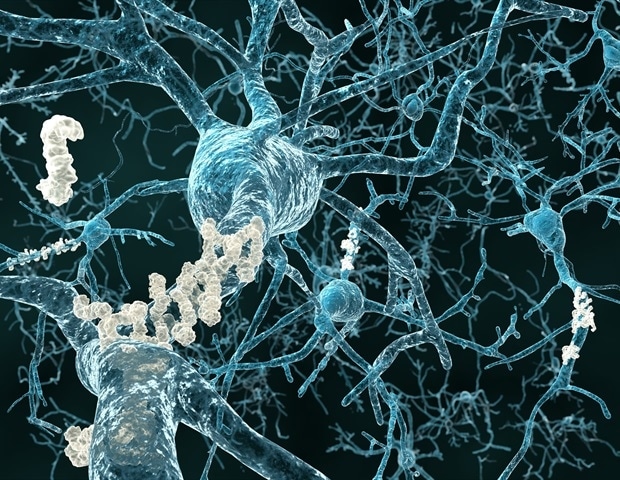
Researchers with the Superior Science Analysis Heart on the CUNY Graduate Heart (CUNY ASRC) have unveiled a essential mechanism that hyperlinks mobile stress within the mind to the development of Alzheimer’s illness (AD). The examine, revealed within the journal Neuron, highlights microglia, the mind’s main immune cells, as central gamers in each the protecting and dangerous responses related to the illness.
Microglia, typically dubbed the mind’s first responders, are actually acknowledged as a major causal cell kind in Alzheimer’s pathology. Nonetheless, these cells play a double-edged position: some shield mind well being, whereas others worsen neurodegeneration. Understanding the practical variations between these microglial populations has been a analysis focus for Pinar Ayata, the examine’s principal investigator and a professor with the CUNY ASRC Neuroscience Initiative and the CUNY Graduate Heart’s Biology and Biochemistry applications.
“We got down to reply what are the dangerous microglia in Alzheimer’s illness and the way can we therapeutically goal them,” stated Ayata. “We pinpointed a novel neurodegenerative microglia phenotype in Alzheimer’s illness characterised by a stress-related signaling pathway.”
The analysis staff found that activation of this stress pathway, generally known as the built-in stress response (ISR), prompts microglia to provide and launch poisonous lipids. These lipids injury neurons and oligodendrocyte progenitor cells-;two cell sorts important for mind perform and most impacted in Alzheimer’s illness. Blocking this stress response or the lipid synthesis pathway reversed signs of Alzheimer’s illness in preclinical fashions.
Key findings
- Darkish Microglia and Alzheimer‘s Illness: Utilizing electron microscopy, the researchers recognized an accumulation of “darkish microglia,” a subset of microglia related to mobile stress and neurodegeneration, in postmortem mind tissues from Alzheimer’s sufferers. These cells have been current at twice the degrees seen in healthy-aged people.
- Poisonous Lipid Secretion: The ISR pathway in microglia was proven to drive the synthesis and launch of dangerous lipids that contribute to synapse loss, an indicator of Alzheimer’s illness.
- Therapeutic Potential: In mouse fashions, inhibiting ISR activation or lipid synthesis prevented synapse loss and accumulation of neurodegenerative tau proteins, providing a promising pathway for therapeutic intervention.
“These findings reveal a essential hyperlink between mobile stress and the neurotoxic results of microglia in Alzheimer’s illness,” stated the examine’s co-lead creator Anna Flury, a member of Ayata’s lab and a Ph.D. pupil with the CUNY Graduate Heart’s Biology Program. “Focusing on this pathway might open up new avenues for remedy by both halting the poisonous lipid manufacturing or stopping the activation of dangerous microglial phenotypes.”
Implications for Alzheimer’s sufferers
This analysis underscores the potential of creating medicine that focus on particular microglial populations or their stress-induced mechanisms. “Such therapies may considerably sluggish and even reverse the development of Alzheimer’s illness, providing hope to thousands and thousands of sufferers and their households,” defined co-lead creator Leen Aljayousi, a member of Ayata’s lab and a Ph.D. pupil with the CUNY Graduate Heart’s Biology Program.
The examine represents a serious leap ahead in understanding the mobile underpinnings of Alzheimer’s and emphasizes the significance of microglial well being in sustaining general mind perform.
